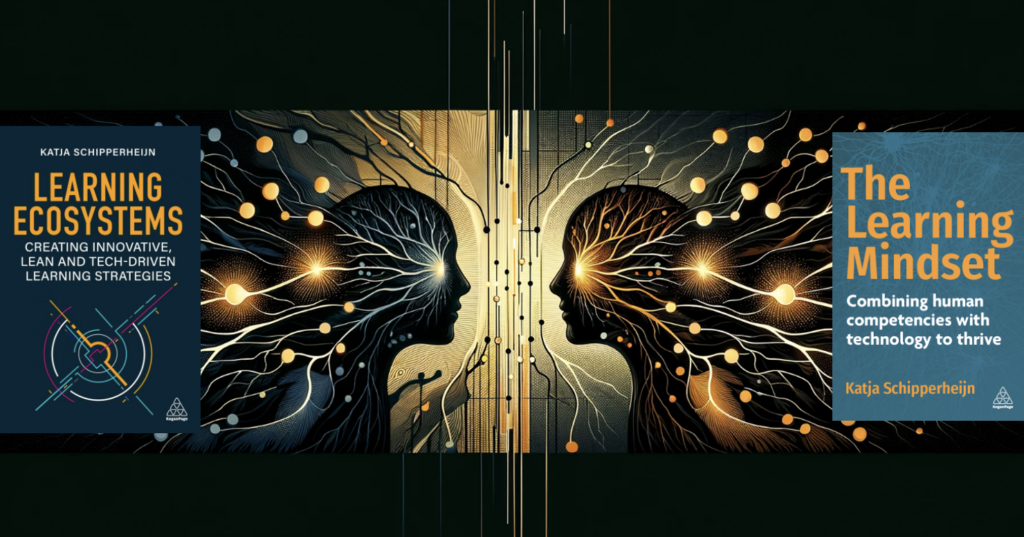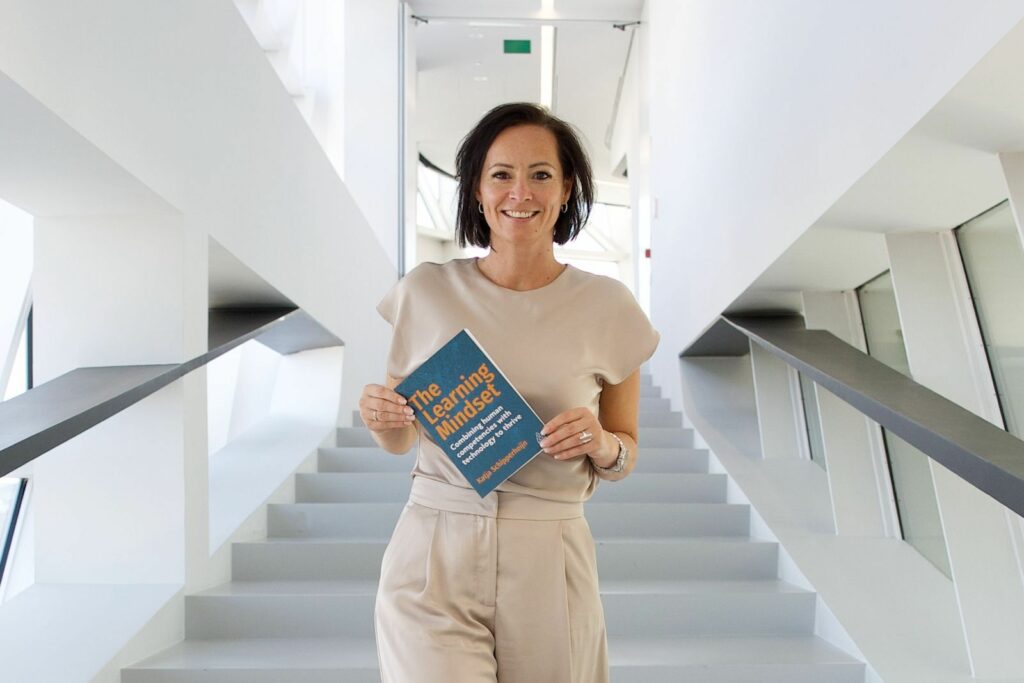Share
It is more urgent than ever to embrace learning that thrives on technology-supported human competencies. However, to achieve this, we need to move away from what L&D traditionally views as its primary mission. Learning is more than just training, it is a mindset that enables us to evolve in an ever-changing world. Learning, as we experience it as toddlers, is an enjoyable journey full of discoveries and encounters that evoke positive feelings and support our well-being.
In this article, I want to encourage L&D professionals and managers to cultivate a learning mindset in their employees and model this behavior themselves. To achieve this, they need to move beyond merely providing training and instead foster a culture where the learning ecosystem promotes informal, social, and collaborative learning opportunities for everyone’s growth.
1. The urgent shift from training to nurturing a learning mindset
Learning is a mindset in which we embrace our deeply human competencies, which the child within us still possesses in abundance. Think of qualities like curiosity and imagination, as well as openness and consilience, the ability to make connections between seemingly unrelated concepts to create new insights. These competencies make us human and set us apart from the algorithmic learning models we train. Learning without these human competencies becomes mere conditioning, similar to the learning techniques we apply to AI models that are increasingly designed in the image of humans. But they are not human, just as humans are not robots that want to be conditioned.
With the ever-increasing pressure on workers to keep up, constantly learn, and be re-conditioned, we often unconsciously create emotional resistance. This resistance causes the release of the stress hormone cortisol, which affects our overall well-being and further reduces the desire to learn. Add to this the fear that we will never be able to match the learning speed of AI, and it’s easy to see why one might lose their love of learning. However, we can rekindle the urge to learn, stimulating the production of dopamine and the happiness hormone serotonin.
As I mentioned earlier, the child who experiences learning as a pleasurable journey of discovery still resides deep within us. On this journey, you choose what interests you and what you want to explore further. As a child, you were supported by your environment, which ideally offered many different options until you found the path you wanted to pursue. Creating such a diverse learning environment often seems challenging for organizations. But with the support of intelligent learning technologies, we can build an almost infinite learning ecosystem that combines collaborative learning and social engagement with a human-centered, personalized experience. Moreover, deploying a human-centered learning ecosystem provides L&D an opportunity to enhance their adaptability and accelerate knowledge exchange through the benefits of AI-driven innovations.
2. Learning can happen anytime, anywhere with adaptive and microlearning experiences
A human-centered and personalized learning experience is not a linear path. In fact, it is multidimensional, involving multiple experiences, formal and informal, conscious and unconscious, that reinforce each other. I agree with Tim Leuning, who argues that children need all these types of experiences to achieve creativity, a point on which he partly contradicts Sir Ken Robinson. More formal learning experiences, and even conditioning, provide the foundation we need, which can then be enriched with curiosity, imagination, and experimentation to gain new insights and apply formal knowledge effectively. This multidimensional approach to learning also strengthens employees’ learning mindsets, creating an experiential journey that supports their growth and, therefore, promotes agile organizations.
To illustrate how this holistic approach can support learning in all its aspects, consider an onboarding journey. A formal learning opportunity, such as e-learning or other forms of training, provides the basic knowledge new employees need about the organization and the tools they will use. However, for those who remember their early days, these experiences are often overwhelming, and when it comes time to apply this knowledge, we often don’t know where to find it again. Learning at the moment of need then becomes essential for efficiently acquiring and applying knowledge. For this purpose, micro-modules on a learning portal are often more appropriate, supporting retrieval exercises that reinforce neural pathways to dormant brain memories. In this process, easily accessible short learning moments offer reassurance in moments of doubt and help avoid mistakes due to assumptions.
Today, these micro-modules offer even more personalized support, as L&D teams can use generative AI to customize content. Additionally, more companies are integrating virtual colleagues or chatbots into their learning ecosystems to deliver the right knowledge at the right time more efficiently. These adaptive, human-centered microlearning moments address immediate needs and make learning in various forms highly accessible to (neuro)diverse employees whenever needed.
3. Promoting social and collaborative learning for an infinite learning ecosystem in symbiosis with AI
These highly diversified and flexible learning opportunities can go even further by creating highly personalized learning pathways that support human competencies and make learning enjoyable. As mentioned earlier, children primarily learn through informal social interactions. They ask questions, express their doubts, or share their failures as moments from which they learn. Innovative technologies designed to support human-centered learning can also create environments where social learning takes center stage.
To illustrate how young people often learn, consider popular apps like TikTok, where you can find tutorials on almost any subject today. Children and young people follow examples or learning influencers like Constanza Garcia, whom I interviewed earlier. These AI-driven social learning platforms use powerful algorithms to amplify person-to-person (H2H) knowledge exchange, often based on unconsciously shared interests between people who do not know each other. This interest-to-interest (I2I) approach creates nearly unlimited knowledge flows within an infinite learning ecosystem. As a result, social learning in symbiosis with AI enables us to discover new things and constantly broaden our areas of interest.
Innovative learning platforms have adopted this approach. They use intelligent algorithms to share employees’ experiences and knowledge with others who can benefit from it, often without either party being aware of it. Learning thus becomes not a mandatory formal path but, if implemented properly, an unconsciously stimulating and enjoyable journey that combines various aspects to nourish our learning mindset.

Conclusion
Supporting employees in their learning journey is not just about providing knowledge but also about fostering a learning mindset that thrives on human competencies such as curiosity, imagination, and collaboration. By going beyond traditional training methods, organizations can create a dynamic and inclusive learning ecosystem that integrates formal and informal experiences, supports diverse learning needs, and promotes continuous growth. Adaptive and microlearning experiences, powered by AI, provide personalized support, while social and collaborative learning opportunities encourage exploration and innovation. By building these environments, we enable employees to reconnect with the joy of learning, driving both individual and organizational success in an ever-changing world.
You might also be interested in:
Share

